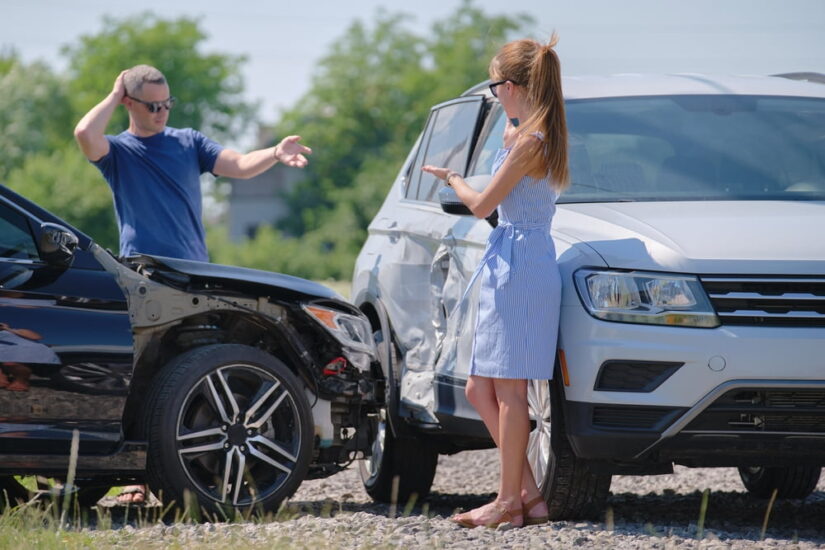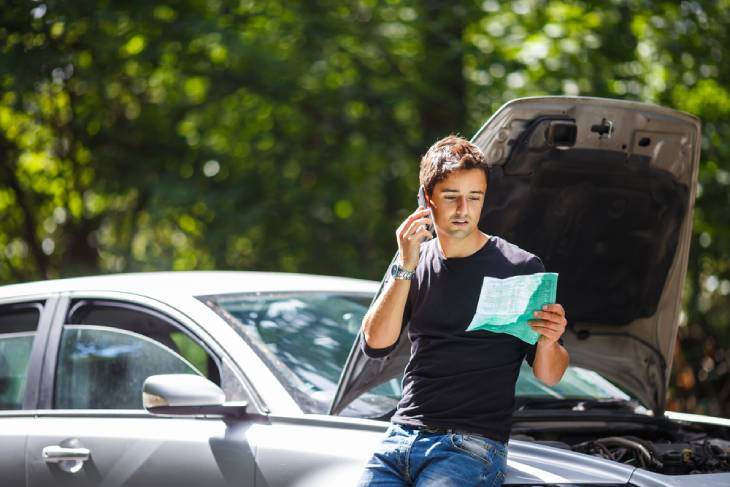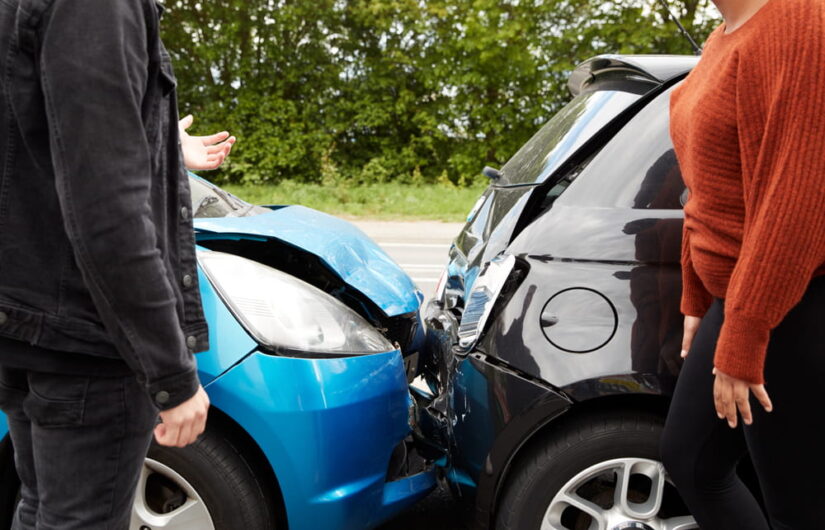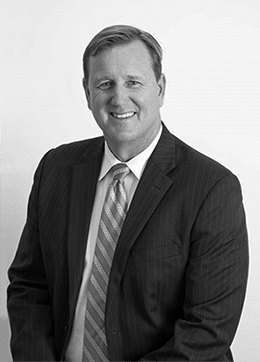No matter how vigilant you are behind the wheel, the unexpected can still occur, leading to an accident and injuries. It is a sobering reality that even the most careful drivers can find themselves in harm’s way due to the negligence of others. From physical injuries to emotional trauma and financial losses, the aftermath of an accident caused by another’s fault can be devastating for the injured victim.
In these cases, the state’s fault-based system, also known as the tort liability system, allows injured victims of another’s negligence to pursue legal action and obtain financial relief for their economic and non-economic damages resulting from the crash.

What is a Fault Accident in California?
An at-fault accident is when a driver is deemed legally responsible for causing the crash due to their actions. This legal principle directly impacts how damages are compensated. In jurisdictions like California, which operates under a fault system, the driver who caused the accident (and their insurance company) must typically pay for the damages and injuries that result. This includes any medical bills, vehicle repair costs, lost wages, pain and suffering, and other losses experienced by the other party that was injured.
This system contrasts with “no-fault” states, where drivers turn to their auto insurance coverage to pay for damages, regardless of who caused the accident.
What Does Fault Mean?
Negligence is the core concept behind fault. If a driver fails to exercise reasonable care on the road, they are considered negligent. It means they failed to behave with the level of care that someone of ordinary prudence would have applied under the same circumstances.
Some of the behaviors that contribute to collisions and result in a driver being considered at fault in California include:
- Speeding: Driving above the speed limit or too fast for road conditions.
- Distracted driving: This includes texting, talking on the phone, using a navigation system, eating, or any other activity that takes the driver’s attention away from the road.
- Driving under the influence: Operating a vehicle while impaired by drugs or with a blood alcohol concentration (BAC) of 0.08% or higher for ordinary drivers, 0.04% for commercial drivers, or any detectable amount for drivers under 21.
- Failure to yield the right of way: Not giving way to other drivers or pedestrians where legally required, such as at stop signs, yield signs, or when merging.
- Running red lights and stop signs: Illegally passing through an intersection against a red light or not coming to a complete stop at a stop sign.
- Improper turns: Making illegal turns or failing to signal before turning.
- Reckless driving: This covers a range of dangerous behaviors like changing lanes too quickly, aggressive driving, or tailgating.
- Driving too slowly: While less common, driving far below the speed limit can also be dangerous for other drivers.
- Failure to adjust to conditions: Not adjusting speed or driving behavior in rain, snow, fog, or on poorly lit roads.
Every driver has a legal duty to operate their vehicle with reasonable care to avoid harming others on the road. They should follow all traffic laws, be aware of traffic conditions, and drive in a manner suitable for safety.
To establish that a driver is at-fault, the other side must prove that:
- The driver breached their duty of care. For example, if a driver is texting while driving and causes an accident, they have breached their duty to drive attentively and safely.
- The breach of duty directly caused the crash, i.e., the accident would not have occurred if not for the driver’s negligent behavior.

Different Types of Faults
To make sure that liability is assigned fairly and accurately based on each party’s actions, California’s legal justice system recognizes different types of fault. They help to identify the nature of the behavior that led to the accident and classify how the fault occurred:
Negligence
This is the most common form of fault identified in traffic accidents. It occurs when a driver fails to exercise the level of care expected of a reasonable person under similar circumstances. Driving too fast for weather conditions, ignoring traffic signals, using a phone or eating while driving. If a driver is found guilty of engaging in any of these kinds of actions, they can be held liable for damages caused to others.
Recklessness or wanton conduct
This goes beyond mere negligence. “Wanton conduct” means there was a deliberate disregard for the safety of people or property. This higher degree of risk-taking behavior includes actions that a reasonable person would know could potentially lead to harm but the perpetrator ignores that risk.
This could be weaving through traffic, tailgating, angrily confronting other drivers, speeding in a school zone, or participating in unauthorized races on public roads, to name a few. This type of fault is considered more serious because it implies a conscious choice to endanger others, which means stricter legal punishments under personal injury claims.
What is Comparative Fault?
Once the type of fault has been determined by your car accident lawyer, the legal doctrine of “comparative fault” helps them resolve your claim by calculating the degree of fault of both you (plaintiff or claimant) and the defendant who caused your crash. As the name suggests, comparative fault is a way for insurance companies to allocate damages based on the percentage of fault.
Pure comparative fault
Under this system, each side’s damages are reduced by their percentage of fault, no matter what that percentage may be. Even if a driver is found to be 99% at fault, they can still recover 1% of their damages from the other party. California uses this system to allow the plaintiff to recover damages even if they are predominantly at fault for the accident.

How Do Insurance Companies Determine Fault?
In states like California that follow the at-fault rule, it is the job of the defendant’s insurance company to pay for damages. As such, they are the ones who have to determine how the accident happened to make the final determination of fault.
After you file a claim, the other party’s insurer will send a claims adjuster to investigate the crash site and damaged vehicles. During this process, the following evidence is collected by the adjuster:
- Statements from all the drivers involved
- Witness statements
- Photographs and any footage from the accident site
- Official police report regarding the crash
- The location and type of damage to the vehicles
- The position of the vehicles
- Skid marks on the road
- Any blood, debris, or other physical evidence from the accident site
- Any traffic citations that were issued right after the crash
As simple as it may sound, fault is not always easy to determine. In fault accident cases where a driver was under the influence or rear-ended another vehicle, it is straightforward to establish who was responsible. But in major collisions – like a multiple car pileup – it can take adjusters several weeks to come to the final conclusion because of the enormous amount of evidence they must evaluate.
What Damages Can You Recover in an At-Fault Motor Vehicle Accident?
If you live in California, you can pursue a car accident claim against the driver who collided into you and recover compensation for:
Economic or special damages
These damages compensate for any financial losses directly resulting from your injury. These are clearly measurable costs, which may include:
- Medical treatment costs (emergency room charges, hospitalization bills, costs of surgical procedures, medication expenses, physical therapy fees, ongoing rehabilitation costs).
- Home health care costs (expenses for required in-home medical care or assistance).
- Lost wages (lost salary or wages, lost overtime pay, lost bonuses).
- Loss of earning capacity (future lost income, reduced earning potential).
- Property damage (vehicle repair costs, vehicle replacement costs, damage to personal items in the vehicle).
- Miscellaneous expenses (travel costs to medical appointments, medical equipment purchases, home modification costs for accessibility).
- Replacement services costs (costs for services the injured party can no longer perform, such as housekeeping, childcare, etc.)
- Funeral and burial expenses (if the accident resulted in a fatality).
Non-economic or general damages
General damages refer to the compensation awarded for non-monetary losses. These are subjective and not easily quantifiable:
- Pain and suffering (physical pain and discomfort caused by the injuries)
- Emotional distress (anxiety, depression, insomnia PTSD, and other psychological impacts)
- Loss of consortium (loss of companionship and support suffered by the spouse/partner)
- Loss of enjoyment of life (inability to participate in hobbies and activities previously enjoyed)
- Disfigurement (permanent scars or other visible marks)
- Permanent disability (long-term physical or mental impairments)
Punitive damages
Though less common, punitive damages can be sought if the at-fault party’s actions were especially reckless or malicious. These are not tied to a specific loss but are intended to punish the wrongdoer and deter similar conduct in the future. To claim punitive damages in California, you must prove that the defendant engaged in conduct with malice, oppression, or fraud. In some situations, this means a driver who was drunk or illegally racing in the streets at the time of the accident.
Your best option is to consult an attorney who has expertise in car accident claims (or bike or truck accident claims) in your state. Remember, as soon as you file an accident claim, you are going up against a powerful insurance company that is more concerned about their bottom line than offering you an appropriate compensation. A skilled personal injury lawyer knows how to build a strong, evidence-based claim and aggressively negotiate with the insurers to help you get the maximum possible settlement, while remaining prepared to go to trial, if necessary.

What If the At-Fault Driver’s Insurance Does Not Cover Your Losses?
All motor vehicle drivers in California are required to have liability insurance to ensure that if they are ever responsible for causing an accident, there is a guaranteed way to compensate the other party for their damages. The minimum limit is known as 15/30/5 coverage:
- $15,000 for injury or death to one person.
- $30,000 for injury or death to more than one person in a single accident.
- $5,000 for property damage per accident.
However, if you have suffered catastrophic injuries that will require extensive surgery or long-term medical care, this amount of insurance is unlikely to be enough to cover all your costs. In some cases, the at-fault driver has no insurance or insufficient insurance. That is when you may need to look t your own insurance policy to check and see if you have additional, applicable coverage.
Check your auto insurance policy to see if you have Collision Coverage, which can pay for repairs to your car, regardless of who was at fault. If the at-fault driver does not have enough insurance to cover all damages, or if they are uninsured, Uninsured/Underinsured Motorist Coverage can help fill the gap. Your Medical Payments Coverage and Personal Injury Protection (PIP) may also pay for your medical expenses related to injuries sustained in the accident by you or your passengers, regardless of fault. PIP is not mandatory in California but can be added to your policy.
If none of this works – the insurance settlement offered is very low, negotiating with the insurance company fails, or your coverages are not enough – you can consider suing the other party personally. Your lawyer should help you in understanding at-fault accidents and the best strategy to take the case to trial and persuade the jury to award you the maximum compensation you are rightfully entitled to.
Why You Should Choose an Experienced Auto Accident Lawyer to Protect Your Rights
Insurance companies are well-prepared with teams of adjusters whose sole job is to challenge your injury claim. They will use every tactic possible to find reasons to reduce the payout. Although they might seem compassionate and supportive at the outset, never forget that their primary goal is to protect their company’s profits, which means minimizing the payouts to injured victims. Working with a proven and capable car, truck or motorcycle accident lawyer can level the playing field.
Evaluating the validity of your case
Not all crashes result in successful compensation claims even if the plaintiff thinks they have good evidence, as any attorney experienced with at-fault accidents will tell you. A dedicated personal injury law firm in California, such as Maho Prentice, LLP, will work on a contingency-fee basis. They will let you know during the first consultation if your case is strong enough to warrant compensation. Time and resources are precious, and a seasoned lawyer can quickly assess if your case has merit. They are also up to date with legal deadlines and procedural requirements, which can be pivotal to your case’s success.

Proving the true extent of your injuries
Providing undeniable evidence that your injuries are a direct result of the accident is more complicated than showing medical reports and bills. Your lawyer knows this and takes all the necessary steps to build a compelling case. These steps include:
- Getting testimonies from bystanders who saw the crash and can confirm the speed of the vehicles or if a traffic light was ignored to create a direct, clear connection between the accident and your injuries.
- Hiring an accident reconstruction expert who uses the debris pattern, vehicle damage, and other forensic evidence to recreate the scene.
- Obtaining video from traffic cameras or nearby security cameras to provide clear unbiased, real-time evidence of the crash.
- Engaging medical experts to explain how your physical trauma directly correlates to the forces or impact described in the police reports or witness statements.
- Compiling your previous medical records to demonstrate your health prior to the accident and comparing them with your current records.
- Collecting data from “black boxes”; many modern vehicles are equipped with recorders that automatically capture data about the speed, brake application, and seatbelt status at the time of a crash.
- Shooting a day-in-the-life video to offer a visually powerful representation of all the challenges you face every day because of your injuries.
Calculating the value of your claim
Do you understand how much your claim is truly worth? Most accident victims think that all they can receive compensation for is their emergency room visit, immediate treatment costs, and maybe the damage to their vehicle. But if the accident has had a big impact on you – your health, your peace of mind, and your financial stability — an experienced attorney may be able to obtain compensation for your ongoing healthcare needs, income you have lost while you could not work, the money you might not be able to earn in the future, and the psychological suffering you have endured.
Pursuing settlement negotiations
Negotiating with insurance companies and other parties involved in the accident requires skill and precision. Lawyers trained in handling car (or any other vehicle) accident cases have the negotiation and conflict resolution skills to deal with insurance adjusters. With thorough evidence and legal acumen, they know how to push the conversation in the direction where you receive a reasonable settlement without taking your case to trial.
Avoiding pitfalls in the claims process
As soon as the accident is reported to the insurance company, they will contact you to get a statement. They may not tell you that the call is going “on record”; they may make it seem like a simple chat to understand your side of the story. Keep in mind that if you say anything, it will become an official statement that could end up damaging your claim. You can always consult with a trusted personal injury attorney first before speaking with the insurance company or giving a statement.
Get a Trusted California Car Accident Lawyer on Your Side
If you or a loved one have been injured in an accident, hiring just any personal injury attorney is not good enough. You need someone who has a deep knowledge of California’s personal injury laws and auto insurance laws along with the resources necessary to investigate your case and negotiate with powerful insurance corporations.
At Maho Prentice, LLP, our auto accident lawyers have more than 65 years of combined experience in representing victims throughout Southern California in almost every type of vehicular crash, including the following:
- Rear-end collision
- Head-on collision
- Side-impact collision
- Sideswipe collision
- Single-vehicle accident
- Multi-vehicle pileup
- Rollover accident
- Hit-and-run incident
- Intersection collision
- Lane departure accident
Our personal injury attorneys will leave no stone unturned to prove the liability of all the negligent parties and recover the largest possible financial compensation for your injuries and losses. In addition to providing aggressive legal representation, our lawyers will give you personalized attention and compassionate support at every step of the process. We understand the physical, emotional, and financial toll that accidents can take, and we are here to alleviate your burdens and guide you toward a brighter future. Our team works tirelessly to investigate the details of your case, negotiate with insurance companies, and, if necessary, litigate in court to achieve the best possible outcome for you. You don’t have to face this challenging time alone – let us be your trusted advocates and champions for justice. Call 805-962-1930 or contact us online to schedule your free consultation.
